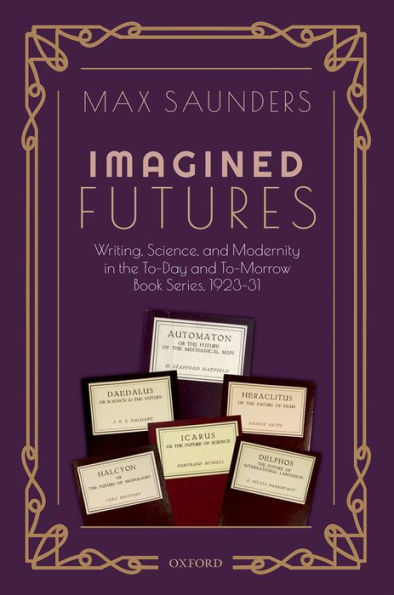This study provides the first substantial history and analysis of the To-Day and To-Morrow series of 110 books, published by Kegan Paul Trench and Trübner (and E. P. Dutton in the USA) from 1923 to 1931, in which writers chose a topic, described its present, and predicted its future. Contributors included J. B. S. Haldane, Bertrand Russell, Vernon Lee, Robert Graves, Vera Brittain, Sylvia Pankhurst, Hugh MacDiarmid, James Jeans, J. D. Bernal, Winifred Holtby, André Maurois, and many others. The study combines a comprehensive account of its interest, history, and range with a discussion of its key concerns, tropes, and influence. The argument focuses on science and technology, not only as the subject of many of the volumes, but also as method--especially through the paradigm of the human sciences--applied to other disciplines; and as a source of metaphors for representing other domains. It also includes chapters on war, technology, cultural studies, and literature and the arts. This book aims to reinstate the series as a vital contribution to the writing of modernity, and to reappraise modernism's relation to the future, establishing a body of progressive writing which moves beyond the discourses of post-Darwinian degeneration and post-war disenchantment, projecting human futures rather than mythic or classical pasts. It also shows how, as a co-ordinated body of futurological writing, the series is also revealing about the nature and practices of modern futurology itself.
1131192727
Imagined Futures: Writing, Science, and Modernity in the To-Day and To-Morrow Book Series, 1923-31
This study provides the first substantial history and analysis of the To-Day and To-Morrow series of 110 books, published by Kegan Paul Trench and Trübner (and E. P. Dutton in the USA) from 1923 to 1931, in which writers chose a topic, described its present, and predicted its future. Contributors included J. B. S. Haldane, Bertrand Russell, Vernon Lee, Robert Graves, Vera Brittain, Sylvia Pankhurst, Hugh MacDiarmid, James Jeans, J. D. Bernal, Winifred Holtby, André Maurois, and many others. The study combines a comprehensive account of its interest, history, and range with a discussion of its key concerns, tropes, and influence. The argument focuses on science and technology, not only as the subject of many of the volumes, but also as method--especially through the paradigm of the human sciences--applied to other disciplines; and as a source of metaphors for representing other domains. It also includes chapters on war, technology, cultural studies, and literature and the arts. This book aims to reinstate the series as a vital contribution to the writing of modernity, and to reappraise modernism's relation to the future, establishing a body of progressive writing which moves beyond the discourses of post-Darwinian degeneration and post-war disenchantment, projecting human futures rather than mythic or classical pasts. It also shows how, as a co-ordinated body of futurological writing, the series is also revealing about the nature and practices of modern futurology itself.
99.99
In Stock
5
1

Imagined Futures: Writing, Science, and Modernity in the To-Day and To-Morrow Book Series, 1923-31
448
Imagined Futures: Writing, Science, and Modernity in the To-Day and To-Morrow Book Series, 1923-31
448Related collections and offers
99.99
In Stock

Product Details
| ISBN-13: | 9780192564863 |
|---|---|
| Publisher: | OUP Oxford |
| Publication date: | 10/22/2019 |
| Sold by: | Barnes & Noble |
| Format: | eBook |
| Pages: | 448 |
| File size: | 4 MB |
About the Author
From the B&N Reads Blog
